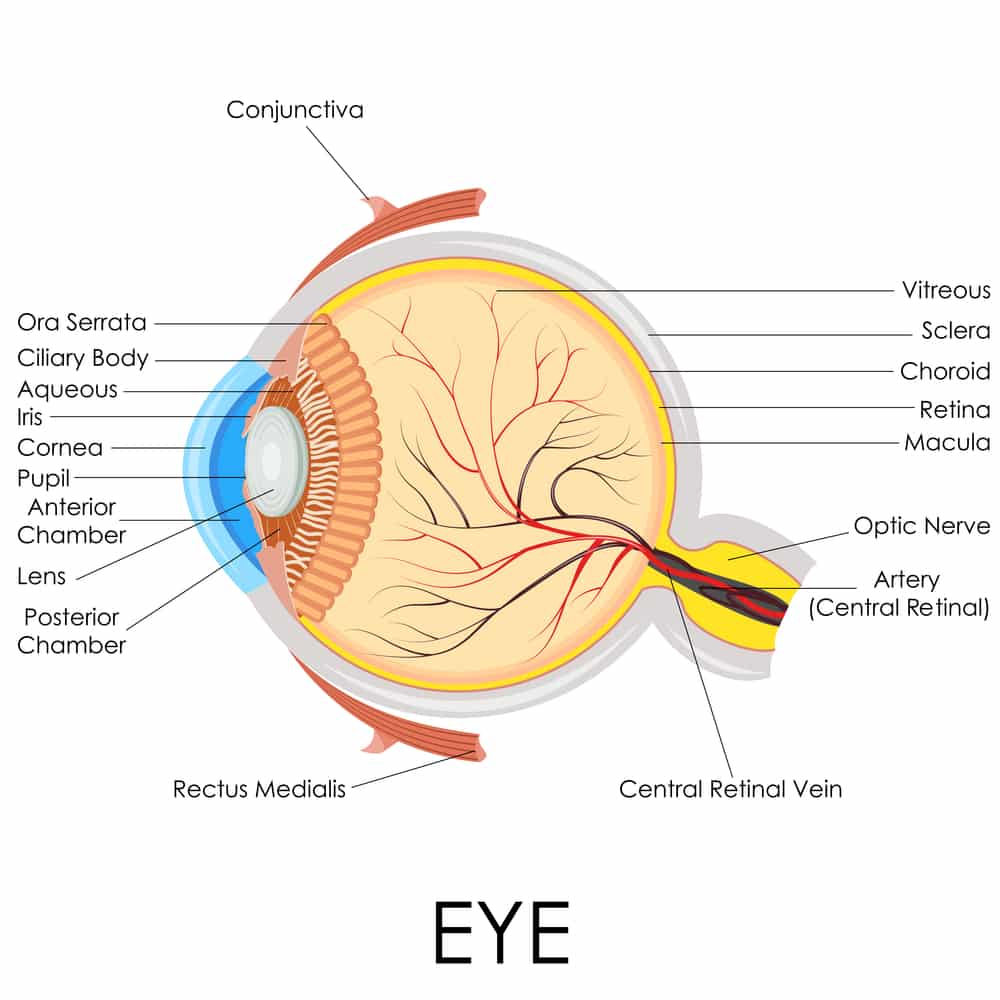It’s easy to take our eyesight for granted. We can look at a gorgeous sunset or admire a famous painting, but chances are that we probably aren’t thinking about how our eyes allow us to process the details. The truth is that the eye is a truly fascinating organ, working in multiple steps to take in information and send it to your brain. Read on if you’ve ever asked yourself, “How does the eye work?”
How Does the Eye Work?
Step One: The Cornea
When you look at an object, several key events have to occur within the eye before you can process what’s in front of you. First, light passes through the cornea, which is the clear front layer of the eye. The cornea covers the pupil, the iris, and anterior chamber (the fluid-filled inside of the eye), each of which serves their own purpose. The cornea’s main function is to bend light, helping to focus most of the light that enters the eye.
Step Two: The Pupil and the Iris
After the cornea bends the light, the light enters your eye through an opening called the pupil. This occurs in tandem with the iris, or the colored part of your eye. The iris actually controls how much light the pupil lets in. If that sounds confusing, it works like this: the size of the pupil is controlled by a series of muscles within the iris. One muscle in the iris constricts the pupil opening, while another muscle dilates the pupil, making it larger. Have you ever seen someone’s pupils grow larger in dim or low-light conditions? This is because the iris dilates the pupil so more light can reach the retina, overall improving your night vision. The opposite occurs in bright conditions, when the iris protects the pupil from allowing too much light to enter the eye.
Step Three: The Lens
So, light has passed through your cornea, then entered the eye via the iris and the pupil. After that, light must pass through the eye’s lens, which is the clear inner part of the eye. The lens works in tandem with the cornea to focus light rays. This, in turn, creates clear images, helping you process objects in front of you.
Step Four: The Retina
After the cornea, iris, pupil, and lens have all completed their function, light finally hits the retina. The retina is a light-sensitive layer of tissue at the very back of the eye. The retina’s function is as complex as it is crucial. Its main function is to receive and transmit objects and images to your brain – but how does that work? Before your brain can process an object or an image, special cells called photoreceptors must turn the light into electrical signals. Those signals travel through the optic nerve to the brain, essentially creating the images you see. These are the three main types of cells in the eye that help perform this function:
- Rods: Rods are photoreceptors, creating images in the brain. In the human eye, rods outnumber cones 18 to 1. Rods are also able to function in low light.
- Cones: Like rods, cones are also photoreceptors. Cones are responsible for processing color vision and spatial acuity. They also allow you to see at a high resolution.
- Ganglion cells: These cells send chemical messages to the brain, helping you process objects in front of you.
_____
So, how does the eye work? It takes a metaphorical village, with each part of the eye serving a different function. In the end, your brain can only process the images it receives from your eye – which is why proper eye care is so important.
If you still have questions about how the eye works, contact Heffington’s if you live in southwest Missouri. Since 1975, the Heffington family has been assisting the Springfield community with top-quality eye care and affordable eyeglasses and contacts. One of the unique features of our family-owned business is that we manufacture lenses at our own laboratory, giving us total control over the service and pricing, and we’re happy to pass our savings on to you. To learn more about our products and services, please get in touch with us online, send an email to [email protected], or give us a call at 417-869-3937 (Optiland location) or 417-882-3937 (House of Vision location). We look forward to hearing from you!

